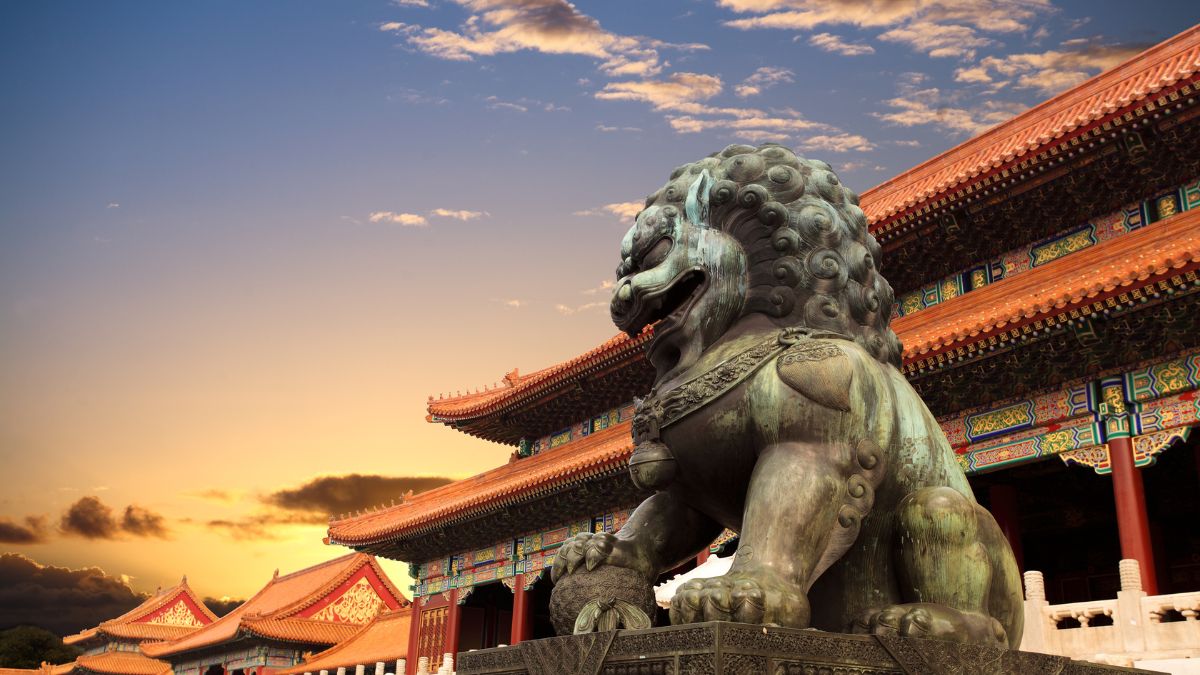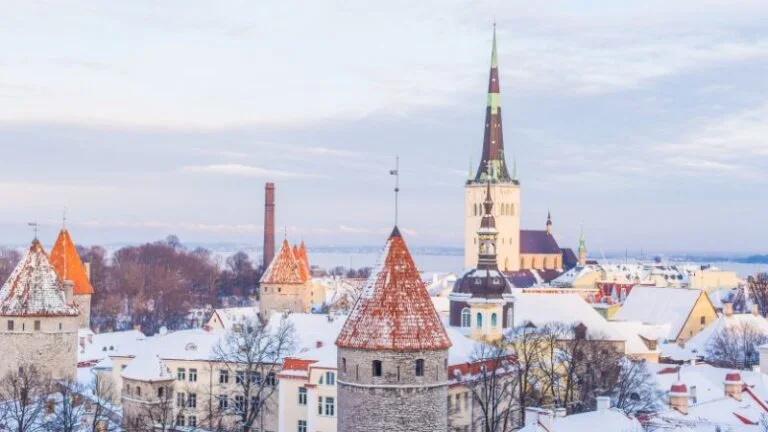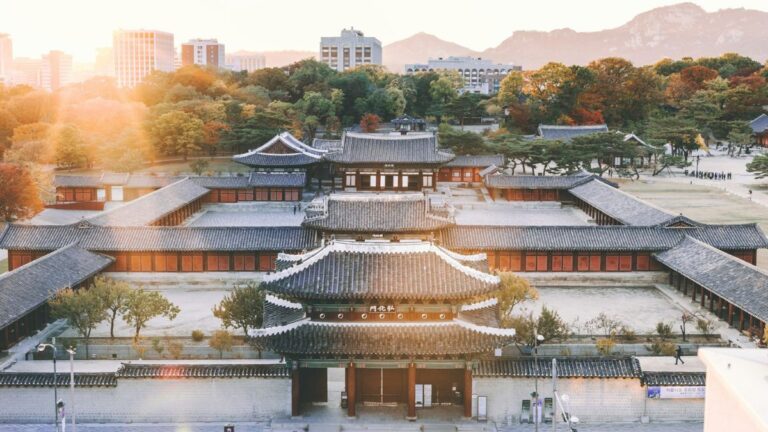Beijing Travel Guide: Ancient Dynasties and Modern Skylines

As participants in Amazon Associates and other programs, we earn from qualifying purchases. This comes at no additional cost to you. For more details, see our Affiliate Disclosure.
Beijing stands as a vibrant blend of history and modernity, where ancient dynasties have left their timeless marks beside soaring modern skylines. Strolling through the city, you can explore imperial palaces and quiet temple grounds in the morning and by evening, admire the dazzling lights of the city’s urban landscape. This unique mix invites both first-time visitors and seasoned travelers to uncover the many layers of Beijing’s cultural tapestry.
Exploring the Forbidden City: A Gateway to Imperial History
The Forbidden City stands as a monumental testament to China’s imperial past, serving as the home of emperors and their households for almost 500 years. This vast palace complex in the heart of Beijing showcases traditional Chinese palatial architecture and has housed numerous cultural treasures over the centuries. As you walk through its gates, you step back in time to an era ruled by the Ming and Qing dynasties.
Inside, each hall and courtyard tells a story of ceremonial importance and architectural grandeur. The intricate designs and preservation of these spaces offer a glimpse into the lives of those who walked these halls centuries ago. Key highlights include the Hall of Supreme Harmony and the Imperial Garden.
Visiting the Forbidden City is more than just a tour; it’s an immersive experience into Chinese history. It’s a place where you can spend hours wandering around, absorbing the rich history that each corner of the complex offers.
The Great Wall of China: Beyond Just a Day Trip
The Great Wall of China is one of the world’s most famous landmarks and is much more than just a wall. Stretching over 13,000 miles, this ancient marvel was originally constructed to protect Chinese states from invasions. A visit here is a walk along the backbone of Chinese history.
While many visit the more accessible sections such as Badaling and Mutianyu, the Great Wall offers numerous less-traveled paths that provide a more solitary and reflective experience. These sections often feature rugged terrain and breathtaking landscapes that challenge and reward adventurous travelers.
Exploring different sections of the Great Wall can reveal the diversity of its construction and the varying landscapes of northern China. Whether covered in snow in winter or surrounded by lush greenery in summer, the wall is a year-round destination with each season offering a unique perspective.
Modern Wonders: Beijing’s Architectural Achievements
Beijing’s skyline is a canvas of modern architectural wonders, showcasing China’s rapid development and innovative design.
- CCTV Headquarters: Known for its radical Z-shape design, this building challenges traditional architectural forms and is a symbol of modern Beijing.
- Beijing National Stadium: Also known as the Bird’s Nest, it was the iconic venue for the 2008 Olympics and is admired for its intricate lattice work.
- Galaxy SOHO: This futuristic building complex features a series of continuous, flowing shapes that mimic the landscape. It’s a prime example of modern urban architecture in Beijing.
- Beijing Daxing International Airport: Shaped like a phoenix, this airport is one of the largest in the world and represents the pinnacle of contemporary design and efficiency.
These structures are not just functional; they are emblematic of Beijing’s status as a global metropolis. Their bold designs reflect the city’s forward-thinking mindset and its embrace of the future.
Culinary Journey: From Peking Duck to Street Snacks
Beijing’s culinary scene is a delightful mix of traditional flavors and modern twists, making it a paradise for food lovers.
- Peking Duck: This world-famous dish is known for its crispy skin and tender meat, traditionally served with pancakes and sweet bean sauce.
- Jianbing: A popular street food, this savory crepe is filled with eggs, green onions, and hoisin sauce, perfect for breakfast or a quick snack.
- Zhajiangmian: Often referred to as Beijing’s ‘soul food’, this noodle dish is topped with a thick sauce made of ground pork and fermented soybean paste.
- Douzhi: For the more adventurous, this fermented mung bean drink is a traditional Beijing beverage, often accompanied by fried dough sticks.
Sampling these dishes allows you to taste the essence of Beijing through its bold flavors and diverse culinary traditions. Each bite tells a story of the city’s rich cultural tapestry.
Art and Culture: Discovering Beijing’s Contemporary Scene
Beijing is not just about traditional art; its contemporary scene is vibrant and ever-evolving.
- 798 Art Zone: Once an industrial complex, now a thriving arts district with galleries, studios, and cafes. It’s a hub for contemporary art lovers.
- National Centre for the Performing Arts: Known as ‘The Giant Egg,’ this titanium and glass dome offers a variety of performances from opera to drama and ballet.
- Today Art Museum: Focuses on modern Chinese art and hosts exhibitions from emerging and established artists.
- Beijing Minsheng Art Museum: Dedicated to contemporary art, it showcases works that reflect the dynamic social and cultural landscape of modern China.
Engaging with Beijing’s art scene offers insights into the current cultural and social issues through creative expressions. It’s a reflection of the city’s modern identity and artistic vibrancy.
Serene Spaces: Visiting Beijing’s Beautiful Parks and Gardens
Despite its bustling urban environment, Beijing is home to numerous parks and gardens where tranquility reigns.
- Summer Palace: An expansive ensemble of lakes, gardens, and palaces. It is a masterpiece of Chinese landscape garden design.
- Jingshan Park: Offers a panoramic view of the Forbidden City and is perfect for a leisurely stroll or morning tai chi.
- Beihai Park: One of the oldest and best-preserved imperial gardens in China, it features a large lake and historical structures.
- Ritan Park: A peaceful retreat known for its ancient sacrificial altar and beautiful landscape design.
These parks are not just green spaces, but places where history, culture, and nature intertwine. They offer a peaceful escape from the city’s fast pace and a chance to reconnect with nature.
Shopping in Beijing: Markets, Malls, and Everything in Between
Beijing offers a shopping experience as diverse as its culture, ranging from bustling markets to ultra-modern malls.
- Wangfujing Street: This bustling shopping street offers everything from upscale brands to traditional Chinese products.
- Panjiayuan Market: A must-visit for those interested in antiques, crafts, and cultural memorabilia.
- Sanlitun Taikooli: A trendy area for fashion and lifestyle shopping, featuring both international and local brands.
- Silk Street: Renowned for silk products, tailor-made clothes, and souvenirs, it’s a hotspot for visitors looking to take a piece of China back home.
Shopping in Beijing is an adventure in itself, providing a glimpse into the local lifestyle and an opportunity to find unique items. Whether you’re looking for luxury goods or street market bargains, Beijing has something for everyone.
Navigating Beijing: Tips for Getting Around the City
Getting around Beijing can be an adventure, but with the right tips, it’s manageable and can add to your experience of the city.
- Public Transport: Beijing’s subway system is extensive, affordable, and usually the fastest way to get around.
- Bikes and Scooters: Renting a bike or an electric scooter can be a fun and flexible way to explore the city.
- Taxis and Ride Apps: Taxis are plentiful, and ride-hailing apps like Didi make it easy to travel longer distances.
- Walking: Many of Beijing’s attractions are located close to each other, making walking a viable option for exploring central areas.
Understanding these options will help you move through Beijing efficiently, giving you more time to enjoy the city’s attractions and hidden gems. With a little planning, you can navigate Beijing like a local.






